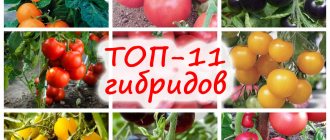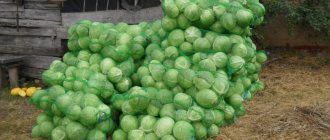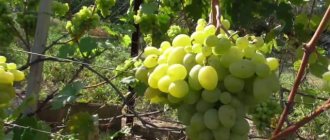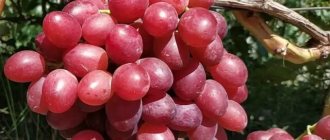Description of Benito tomato
In 1998, the applicant and originator of the hybrid, the company BEJO ZADEN BV WARMENHUIZEN, HOLLAND, submitted an application to maintain the variety in the register of breeding achievements of the Russian Federation. Benito successfully passed the test and in 2000 was recommended for cultivation in open ground, but not throughout the country, but only where it showed the best results. The list included:
- Volgo-Vyatsky;
- Central Black Earth;
- Central;
- East Siberian;
- Ural;
- Far Eastern.
The variety is assigned code No. 9802584. And it is recommended for fresh consumption and processing into tomato products.
Description of fruits
During the ripening period, the fruit is light green. Fully ripened fruits of the Benito hybrid:
- red;
- cuboid shape;
- have weakly expressed ribbing;
- seed nests 2-3;
- average fruit weight from 40-70 g (does not exceed 100g);
- Tasters' assessment: “good” and “excellent”;
- marketable yield of fruits is 100%.
Fully ripened tomatoes are moderately firm. The peel holds the pulp perfectly. The tomato is cut evenly, neatly, without flaws and behaves well in vegetable slicing.
When can you harvest?
From the moment the first seedlings appear until the start of harvesting, it takes from 94 to 112 days. These tomatoes are often harvested before they reach full ripeness, which helps preserve them better during transportation. In addition, tomatoes of this variety are able to ripen very quickly, being picked unripe.
The fruits of Benito tomatoes, having an attractive presentation and high gastronomic qualities, can be used:
- fresh in salads;
- as all kinds of sauces, purees and pastes;
- in hot first and second courses;
- in the form of juice;
- in canned form.
The fruits have good keeping quality and transportability. The efforts of Dutch breeders to create a tomato hybrid that can adapt to different climatic and weather conditions were crowned with success and allowed the tomato variety Benito f1 to gain popularity from Western Europe to the Far East over a quarter of a century.
Characteristics of Benito tomato
The first generation hybrid tomato Benito has the following characteristics:
- mid-early fruiting period (95-113 days from full germination);
- determinant;
- the leaf is large, dark green in color;
- inflorescence simple;
- peduncle with articulation
Productivity and fruiting
During the period of breeding tests on control plantations, it is customary not only to take into account the yield, but also to compare it with standard varieties for a given region. When testing the Benito hybrid, the results were as follows:
- in the Volga-Vyatka region the yield is 175-392 c/ha. The Moskvich standard has 139, the Nepryadva standard has 491 c/ha;
- in the Central Black Earth region the indicator is 152-329 c/ha. This is 12 c/ha higher than that of Maryushka and 177 c/ha higher than that of the Fitous variety;
- in East Siberian 358-526 c/ha. At the same time, the Siberian early ripening standard has 437 c/ha, the Picket standard has 283 c/ha;
- The Far Eastern region showed limits from 423 to 635 c/ha. This is 236 c higher than the Zemlyak standard.
The maximum yield was recorded in the Khabarovsk Territory - 635 c/ha. Considering that the hybrid has a 100% marketable fruit yield, the yield indicators are impressive.
Area of application of fruits
Tomato Benito, according to the characteristics of the variety, is recommended for fresh, salad consumption and processing. Carrying out research on tomato juice, it was found that the product contains 4.0-4.8% dry matter and 2.1-2.4% total sugar. Such indicators indicate that the fruits produce tomato products with high taste. If there is an excess of fruits, you can prepare them:
- tomato juice;
- sauce;
- ketchup;
- tomato paste;
- lecho;
- vegetable adjika.
As reviews from vegetable growers indicate, Benito turns out great canned in tomato juice. The tomatoes keep their shape perfectly, their size is not large, and the tomato juice comes out bright scarlet, sweet and thick.
Resistance to diseases and pests
During testing of the variety, it was found that Benito has good resistance to tomato diseases such as fusarium and verticillium. However, the commission noted that the hybrid is susceptible to stolbur and is prone to fruit damage by blossom end rot. Looking at this, vegetable growers should be careful. If the site contains the pathogen from year to year, then it is better to refuse to grow the hybrid.
The variety has average resistance to late blight.
Advantages and disadvantages of the variety
The Benito tomato undoubtedly has a number of advantages:
- early fruiting;
- high productivity;
- versatility of fruit use;
- good transportability and keeping quality of fruits;
- excellent consumer qualities of tomato products.
Among the disadvantages, according to the description and characteristics of the Benito variety, is weak resistance to some diseases. However, those vegetable growers whose gardens are not affected by the pathogen claim the opposite.
Many people consider the disadvantage that they cannot collect their own seeds to obtain a high-quality harvest. There is a solution to the problem. Tomato remains viable for 4-5 years. If you buy fresh seeds and do not use them all in one year, but divide them into several
Advantages and disadvantages, features and differences between Benito and other varieties
The peculiarity of the Benito hybrid is the highest, for a short plant, fruit yield of very good taste. At the same time, tomatoes are able to grow and ripen in conditions of not very warm climates, including those with a lack of sunlight. The only disadvantage of this tomato is the tendency to develop stolbur disease, but it has many advantages:
- very high yield;
- good or excellent taste of universal fruits;
- ease of plant maintenance;
- resistance to many diseases;
- ability to bear fruit in partial shade;
- good transportability and long-term preservation of the crop.
Comparison with other low-growing varieties
There are many determinate, low-growing hybrids and varieties; there is plenty to choose from. For comparison, consider the following:
- Father's daughter. Early, salad hybrid of the first generation. The fruits are dense, heart-shaped, and have slight ribbing. They have good taste and pink color. The weight of the tomato is 140-150 g. The yield of the hybrid is 13-13.5 kg per square meter. m. area of polycarbonate shelter;
- Betta. Variety for open ground. Salad. Ultra early. The first fruits can be obtained on days 78-85. The plant is not only determinate, but also standard with weak branching. The sheet is corrugated. The height of the bush is up to 50 cm. The fruit is red with a rib, flat-round, weighing 54-71 g. The taste is rated “good”. Productivity up to 2 kg per bush. Disadvantages of the variety: strong susceptibility to cladosporiosis and moderate susceptibility to tobacco mosaic virus and fusarium;
- Gourmand. Early, salad. For cultivation in open ground and under cover. The height of the bush is up to 60 cm. The fruit is round, 100-120 g, with smooth, delicate skin. A green tomato has a spot near the stalk. Ripe, beautiful crimson color with excellent taste. Productivity up to 7 kg per square meter. m. Resistant to weather changes and tomato diseases;
- Nobleman. Recommended for cultivation only in the West Siberian and Ural regions. Salad, medium fruiting period. Plant height is up to 62 cm. The fruits are heart-shaped, medium-ribbed, crimson, weighing 150-250 g. They have good productivity and a marketable yield of up to 95%;
- Siberian early ripening. Recommended for gardens and greenhouses for fresh salad consumption. Early. The fruits are round and flat-round, from 65 to 120 g, slightly ribbed, red. The yield is high, up to 550 c/ha, but the taste is satisfactory;
- Big Mama. Salad. Medium term. The fruit is round, large (230-250 g), with a weak rib, low density, red, excellent taste. Productivity in the greenhouse is 7.0-9.0 kg/sq.m. m.
Each gardener and vegetable grower chooses his favorite variety. But not every variety can produce a good harvest in certain conditions. Experienced farmers, in search of the best, annually test 2-3 new varieties on their plantations.
Planting seedlings in a permanent place
In order to properly plant seedlings in a permanent place, several conditions must be met.
Deadlines
The optimal timing for planting seedlings in a permanent location is determined by the climatic and weather conditions of a particular location. Typically, the time for planting seedlings in open ground falls between the second half of May and the first half of June. In this case, the age of tomato seedlings should be from 55 to 60 days, and the soil temperature should not fall below +13°C.
Selecting a location
The soil for planting seedlings should be prepared in the fall by digging up the area and enriching it with organic fertilizers, represented by mullein or bird droppings and applied in an amount of 7 kg per m².
In the spring, immediately before planting seedlings in the soil, it is enriched with a mixture of the following fertilizers:
- 30 g potassium;
- 40 g phosphorus;
- 30 g nitrogen.
The Benito tomato variety is not as demanding on lighting as many other tomato varieties. But it also does not tolerate strong winds on the site. It is very important for the good growth of this variety to know which predecessors grew previously in a given area. The quality of the neighborhood is also very important, that is, what other plants are located next to the tomato beds.
Tomatoes feel very good on the ground where the following plants previously grew:
Recommended reading
How to spray tomatoes for ovary: the best means, basic processing rules
- beets;
- turnip;
- pumpkin;
- carrots;
- radishes;
- parsley;
- watermelons;
- zucchini;
- corn;
- peas;
- celery;
- cabbage
And it’s best if this area was previously sown with green manure.
During their growth, tomatoes feel great if they grow next to their beds:
- radish;
- beet;
- carrot;
- cabbage;
- salad;
- garlic;
- onion;
- bush beans;
- radish;
- basil;
- calendula;
- corn;
- spinach;
- asparagus;
- parsley.
But in no case should you plant tomato seedlings in a place where nightshade crops previously grew in the form of:
- potatoes;
- eggplant;
- pepper;
- physalis.
Important! Tomato plants should not be planted for more than 3 years in a row in the same place.
Planting scheme
Holes for planting are dug in advance to a depth slightly greater than the height of peat cups or earthen clods if the seedlings are removed from plastic containers. They are arranged in such a way that there are more than 3 plants per 1 m².
The following are added to the wells in small quantities:
- wood ash;
- humus;
- superphosphate.
Planting seedlings in the ground is completed by watering and mulching the soil.
Growing rules
The Benito tomato does not require special growing conditions. However, knowledge of agricultural technology will help you avoid troubles and get a good harvest.
Planting seedlings
Professionally collected seeds do not require processing or disinfection. If you are not sure of freshness and germination, then you can do this:
- wrap the seeds in a damp cloth;
- wrap in a plastic bag;
- put in a warm place for 3-4 days;
By unfolding the package after germination, the living seed will be clearly visible. Its root shoot will show signs of life. This seed needs to be sown. To do this, you will need a soil mixture, which should be:
- warm;
- light;
- nutritious;
- clean from pathogens and weeds.
We fill the tub with soil, compact it and place the sprouted seeds at a distance of 3-4 m from each other. Cover with soil and spray with warm water from a spray bottle. Cover with glass or film and place in a warm place for 4-5 days. During this time, 70% of the seed germinates.
Next, open the greenhouse and place the tub on the lightest windowsill. The air temperature during the day should be between 21-22 ᵒC, and at night we drop it to 17ᵒC.
Attention! High temperature and low light contribute to the elongation of seedling shoots.
Particular attention should be paid to watering. Excessively cold water and abundant watering promote the proliferation of a fungus that causes seedling disease - black leg. Watering should be:
- rare;
- deep;
- carried out only with warm water.
Attention! If the seedlings begin to stretch, add more soil and lower the temperature, especially at night.
Transfer
Seedlings are planted in individual containers during the diving period. Soil is poured into the cups, compacted and a depression is made. The lower part of the root is removed from the tomato plant and lowered into a recess up to the cotyledon leaf. Water and shade for 2-3 days.
The seedlings remain in such cups until they are planted in open ground. By that time, high-quality seedlings should have:
- age 55-60 days;
- well developed root system;
- dense shoot 20-25 cm high;
- 6-7 well-developed leaf blades.
Before planting in the garden, seedlings are hardened off.
To do this, the tubs are taken outside for 10-15 minutes, then for 25-30. Before planting, the seedlings are left in the air overnight
Aftercare
After planting in the garden, the plant should also be looked after. He needs:
- weeding;
- watering;
- formation of shoots;
- stepsoning;
- fertilizing
There is no place for weeds in the garden. Weeds constantly take away nutrients from tomatoes and provide shelter for pathogens and pests. The beds should be weeded regularly.
Watering is carried out not often, but so that the entire earthen lump of roots is abundantly soaked with water. If the heavenly moisture is not enough, then watering is carried out manually or using a drip irrigation system.
Pest and disease control
Open ground tomatoes are treated against late blight after planting at the fruiting site, and then regularly after 20-25 days or depending on weather conditions.
When choosing a drug, you should carefully read the instructions. At the beginning of cultivation, expectations from processing to harvesting do not matter, but during the fruiting period it is important. Give preference to high-quality, complex preparations and tomatoes will be safe. “Quadris” has proven itself to be excellent, but you can’t wait for a flash. It is better to carry out preventive treatment.
If fruiting is in full swing, and the weather is unstable and there is a high probability of crop loss, use Bordeaux mixture - the most harmless remedy.
How to grow tomatoes
There is no particular specificity in growing Benito tomatoes . Follow the basic guidelines for growing nightshades.
Landing
First of all, you should take care of preparing the soil . After all, the taste and quantity of the future harvest largely depend on its quality.
The soil needs to be loosened and organic fertilizers (manure, straw, compost) added. If the soil acidity is high, add lime to the soil.
Reference. In the fall, dig up the areas where you plan to plant tomatoes and add humus to the soil.
Seedlings are planted in greenhouses in the second half of May , and in open ground - closer to the beginning of June.
It is important that the earth warms up and there is no frost at night. By this point, the bushes will have reached a height of approximately 30 cm. Each plant will have 6-7 full leaves. Before planting the bushes, the soil is watered and thoroughly loosened . Prepare the holes by placing fertilizer with phosphorus on the bottom. The distance between the sprouts should be 50 cm. It is best to organize the planting in a checkerboard pattern.
The sprouts are transferred to the holes along with a lump of earth from the pots . Then the soil around the bushes is compacted and watered abundantly.
It is better to immediately tie the plants to a support at the top.
Features of growing Benito tomatoes
When considering the Benito f1 tomato, description, photo, reviews, you should take into account that the size of the bush can vary depending on the nutritional value of the soil. The peculiarity of the variety is that, being short and determinate, the hybrid can easily increase the habit of the bush and reach a height of 80 cm. The Benito tomato needs regular fixing garters.
Pest and disease control
The Benito F1 tomato variety is disease resistant. But in regions of harsh farming, preventive treatments will not hurt. At the beginning of the growing season, the bushes are sprayed with Bordeaux mixture or other copper preparations. In the future, Fitosporin is used, which protects the variety from a complex of diseases.
In rainy summers, tomatoes are plagued by aphids and caterpillars. They get rid of them using chemicals or folk remedies. A solution of tobacco or an infusion of hot pepper has proven itself well.
Harvesting and application
The harvest from Benito tomato bushes ripens gradually and harvesting can be done as the tomatoes turn red. If it is necessary to ripen quickly, brown tomatoes are removed and ripened in a warm place.
The variety has excellent keeping quality. Even a fully ripened tomato can be stored for a month without compromising its integrity. Transportability is also very high. The skin prevents tomatoes from cracking and becoming unusable.
Having reached full ripeness, the tomatoes are ready for processing. They are rolled into jars or salted in barrels. The prepared sauce has a very pleasant taste, thick consistency and a beautiful scarlet color.
Transplantation into open ground
Plants need to be watered regularly
Transplantation to a permanent place is done around mid-May, when the age of the seedlings reaches 60 days. It is better not to keep seedlings indoors for more than this period, otherwise they will take root worse and be sick for a long time. If the plant is ready to be transplanted, and it is still frosty outside, then it is better to plant it in a greenhouse.
The holes are prepared in advance and fertilized with superphosphate and humus. After transplanting, the seedlings should be watered abundantly and the soil should be mulched with straw.
Productivity and other characteristics
Not every tomato can boast such a high yield. From one bush you can harvest up to eight kilograms of tomatoes. Much depends on the natural conditions and zoning of the site.
If you grow this crop using the bush method, the yield will increase several times more.
- amenable to long-term transportation;
- grow well in any area, even in the shade;
- resistant to many diseases, especially fusarium and verticillium, but not resistant to blossom end rot and stolbur;
- excellent keeping quality, long shelf life. If you pick unripe tomatoes and leave them to ripen at home, the fruits will ripen perfectly and will not lose their taste and presentable appearance;
- cultivation takes place in open ground, in greenhouses, under film and greenhouses;
- high taste data, the pulp is not watery, sweet, minimal number of seeds (the amount of sugar reaches 2.4 percent, and dry matter - 4.8 percent).
Not all hybrid species can boast of such qualities and characteristics.
Useful video
This video tells about tomato pests and ways to combat them:
In the table below you will find links to tomato varieties that ripen at different times:
| Super early | Mid-season | Mid-early |
| Leopold | Nikola | Supermodel |
| Shchelkovsky early | Demidov | Budenovka |
| President 2 | Persimmon | Major F1 |
| Lyana Pink | Honey-sugar | Cardinal |
| Locomotive | Pudovik | Bear Paw |
| Sanka | Rosemary pound | King Penguin |
| Pickling miracle | Beauty King | emerald apple |
Obtaining seedlings
Benito tomatoes are grown in seedlings. Seeds are planted at home. The resulting seedlings are provided with temperature conditions and watering. Grown tomatoes are transferred to a permanent place.
Planting seeds
Benito tomatoes are planted in prepared soil. It can be obtained by mixing an equal volume of fertile soil and compost. An alternative option is to purchase peat tablets or ready-made soil mixture.
The soil is treated by heating in an oven or microwave oven. After 2 weeks, planting work begins. Another way to treat the soil is to water it with a solution of potassium permanganate.
Advice! Before planting, Benito tomato seeds are kept in warm water for 2 days to improve germination.
If the seeds have a colored shell, they do not need additional processing. The manufacturer covered the planting material with a nutrient mixture from which the plants will receive energy for development.
Containers up to 15 cm high are filled with moistened soil. Benito tomatoes are planted in boxes or separate containers. The seeds are placed at intervals of 2 cm and covered with fertile soil or peat with a layer of 1 cm.
Containers with plantings are kept in a dark place. Seed germination is directly affected by room temperature. In warm weather, seedlings will appear a few days earlier.
Seedling care
Benito F1 tomato seedlings are provided with the necessary conditions:
- Temperature. During the daytime, tomatoes are provided with a temperature range from 20 to 25°C. At night the temperature should remain between 15-18°C.
- Watering. Benito tomato seedlings are watered as the soil dries using a spray bottle. Warm water is sprayed over the soil, preventing it from getting on the stems and leaves of plants.
- Ventilation. The planting area is regularly ventilated. However, drafts and exposure to cold air are dangerous for tomatoes.
- Lighting. Benito tomatoes need good lighting for 12 hours. When daylight hours are short, additional lighting is required.
- Feeding. Seedlings are fed if they look depressed. For 1 liter of water take 2 g of ammonium nitrate, double superphosphate and potassium sulfate.
2 weeks before planting, tomatoes are hardened in the fresh air. The seedlings are transferred to the balcony or loggia. At first it is kept for 2-3 hours a day. Gradually, this period is increased so that the plants get used to natural conditions.
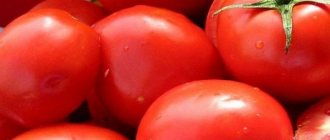
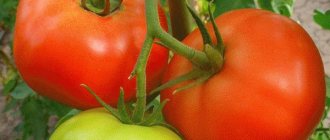
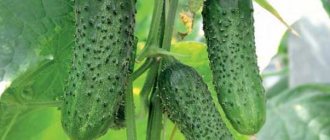
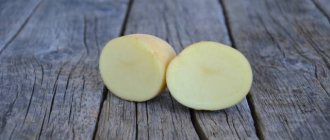
![Tinkoff (Debit card) [CPS] RU](https://adzumi-sushi.ru/wp-content/uploads/tinkoff-debetovaya-karta-cps-ru15-330x140.jpg)

